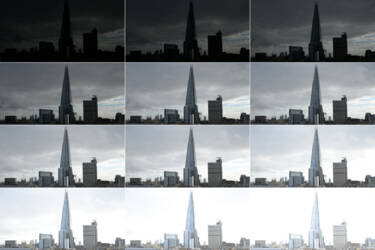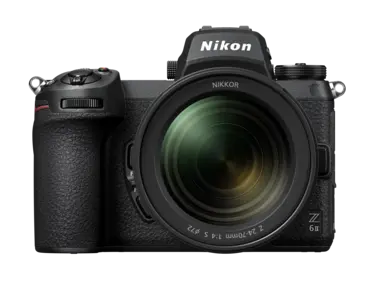What is ISO in photography?

Everything you need to know about how sensitive your camera’s sensor is to light
ISO expresses how sensitive your camera’s sensor is to light as a number. The lower that number, the lower the sensitivity, and vice versa. People often recommend you keep your ISO at around 100 as often as possible because boosting it too high can result in grainy looking digital noise.
ISO is one of three critical things that determine whether your photo has good exposure, often referred to as the ‘exposure triangle’. The other two, shutter speed and aperture, are covered in separate articles.
For now, let’s examine ISO. Like the other two elements in the exposure triangle, changing your camera ISO setting will either brighten or darken your photo.
A brief history of ISO and its meaning
ISO numbers were first created by the International Organization for Standardization, a professional body that creates standards for everything from cars to medical devices.
In 1974, the standards for film called ASA and DIN were incorporated into ISO. Today, we use the term ISO to refer to the standard for both digital and film exposure, though you’ll sometimes still see film speed referred to as ASA.
In the film camera days, ISO referred to a film’s ‘speed’ or how fast it burned when exposed to light. Films with a higher ISO number were more sensitive to light and burned faster, so they needed less light to burn a photograph on to the film strip.
With today’s digital cameras, raising your ISO setting will increase the sensitivity of the light sensor inside the camera, meaning it can make images even in low light. In earlier digital cameras, you couldn’t raise the ISO very high without producing a lot of static-like digital noise.
However, modern DSLRs and mirrorless cameras handle higher ISO settings much better. You should still attempt to use a lower ISO setting when possible, but digital noise is far less likely to ruin your photo with a modern camera.

The same shot with different ISO settings. From 100 ISO at 1/2000 sec and f/11 (top left) to 20,000 ISO at 1/2000 sec and f/11 (bottom right).
ISO ranges and common terms
Every digital camera comes with a certain range of ISO measurements it can use out of the box. That’s referred to as its ‘standard ISO range’ or just ‘standard ISO’. It used to be from around 100 to around 1600, but modern cameras can take it as high as 36000 or more. Many beginner cameras come with a range of 100-3200 ISO.
‘Base ISO’ is the lowest possible ISO setting your camera can use. That’s 64 for the Nikon Z9, Z8 and Z7II. The base ISO of the Nikon Z6III, Z6II, Zf, Z5, Zfc, Z50 and Z30 is 100. Some cameras do have settings lower than that, usually named something like Lo 1, Lo 2 and Lo 3. Some people don’t like using them because you lose dynamic range in your photo (the amount of detail in the highlights and shadows), but they are an option in extra-bright environments.
Adjusting your camera ISO
There are a couple of ways to dial in your camera’s ISO setting. If you’re using manual mode, you’ll simply rotate a dial or click wheel. Sometimes, as on my Nikon Z6II, you’ll need to press down a button labelled ‘ISO” to engage the ISO control, then rotate the click wheel to adjust your setting.
You can also use a photo mode where your camera handles the ISO adjustment for you. Modes such as Auto, Auto ISO or Aperture Priority (with Auto ISO activated) let the camera automatically adjust your ISO to get what it sees as an even exposure. When first starting, these modes may help you get a handle on ISO and how it changes your photo’s brightness without changing it yourself. But, if you’re going for a certain mood or creative angle in your photograph, you’ll want to learn how to take more control.
A dark and moody exposure, for example, requires the majority of your image to be in shadow, using highlights to accentuate key parts of the image. Your camera won’t allow for that in Auto mode, it’ll just brighten the image to get the most even exposure for the environment, as your smartphone camera does when you turn it on at night to take a picture.
How ISO works
When you start studying the exposure triangle, you’ll notice very quickly that each setting is connected to the other two. Adjusting ISO often means adjusting at least one other setting such as shutter speed or aperture.
How you use ISO will depend on the situation and subject matter you’re photographing. In bright sunlight, using a lower ISO setting like 100 makes sense since you don’t need to boost your camera’s light sensitivity to capture a good image. Low-light environments, on the other hand, need a boost to get a decent exposure.
Let’s look at a real-world example.
Say you’re photographing sports or wildlife. You’ll want to freeze motion, but raising the shutter speed means there’s less time for light to hit your sensor because the shutter will only open for a small fraction of a second, for example, 1/1000. To make sure you can still get good exposure, you’d need to raise the ISO even in brighter sunlight because you’re compensating for the faster shutter speed.
If that seems confusing, don’t worry. You don’t have to understand everything right away. The best way to learn photography is by executing the concepts you learn in real life. Play with your camera’s ISO setting and take the same photo multiple times. You’ll see how just changing the ISO makes a difference.

What ISO should you use?
The short answer is that it depends. Every situation is different, and you could find yourself changing the setting multiple times in the same session. Wedding photographers, for example, will use lower ISOs outside in bright daylight and higher ones inside during the reception.
A good general rule is to use lower ISO settings in bright light and higher ones in low light. But there are ways to bend this rule – or break it entirely.
Using a tripod with a low ISO setting will still allow you to get good exposure because you can leave the shutter open longer without motion blur. Photographing in meagre light with a high ISO can create noise, but that noise may be something you want for a film-like look. It’s all up to you and what you want to achieve with your image.
You have to know and understand the rules before you can bend them, so learn the way ISO works through practice with your camera. Then, get into the creative ways you can control exposure to create interesting images as you master the entire exposure triangle.
More in Camera 101s
Better photography starts here

Unlock greater creativity









